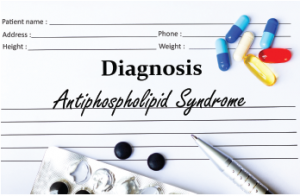
Marcelo Ricardo Daros/shutterstock.com
CHICAGO—Doruk Erkan, MD, MPH, a rheumatologist at the Hospital for Special Surgery and Weill Cornell Medicine in New York City, described recent developments in the field of antiphospholipid syndrome (APS) to the rheumatologists gathered for the ACR’s State-of-the-Art Clinical Symposium in April.
He introduced APS as a “field with limited data and lots of controversies,” although, he added that recently a significant amount of collaborative effort has been made to advance the field. For example, he discussed an international multidisciplinary effort underway to develop new APS classification criteria. The new criteria are being created using methodology endorsed by the ACR and European League Against Rheumatism (EULAR). Dr. Erkan said he hopes the APS classification criteria will be updated in the next few years.
Thrombosis Risk in aPL-Positive Patients
In addition, experts are creating improved risk calculation/stratification protocols for patients who test positive for antiphospholipid antibodies (aPL). This is important because the clinical manifestations of aPL occur on a spectrum and not every positive aPL result is clinically significant. Likewise, thrombosis is multifactorial, and many factors in addition to aPL can influence the thrombosis risk in aPL-positive patients.
So the question becomes: What is a clinically significant aPL profile? The most basic answer to this question is that, although low-titer anti-cardiolipin antibody (aCL) or anti-β2-glycoprotein-I (aβ2GPI) levels during infections are common, persistently elevated aPL is noteworthy. Thus, aCL or aβ2GPI titers that are less than 20 U are rarely clinically significant, but titers that are moderate to high (≥ 40 U) and/or positive lupus anticoagulant (LA) tests are associated with an increased risk of thrombosis.
In particular, the report from the 14th International Congress on Antiphospholipid Antibodies Task Force published in Autoimmunity Reviews in 2014 described APS laboratory diagnostic and trends. It stated that “aPL should not only be considered as diagnostic markers, but also as risk factors for clinical events.”1 The hope is that aPL and other risk factors can ultimately be compiled into a calculator that can be used to predict the risk of thrombosis.
One such effort to calculate thrombosis risk using aPL profile and selected cardiovascular disease risk factors is the Global APS Score (GAPSS), which was verified in four steps.2 In the first step, patients with systemic lupus erythematosus (SLE) were assigned weighted points based on risk factors identified by multivariate analysis. The researchers noted that the scoring protocol awarded higher scores to patients with thrombosis and pregnancy morbidity. In the second step, the scores were validated in patients with SLE. The third step involved a prospective assessment of patients with SLE; during this step, the researchers found that those with more than a three-point increase during the follow-up were most reliably at increased risk for vascular events. Finally, in step four, researchers assessed patients with primary APS (PAPS) and found a higher score in patients with thrombosis relative to those with pregnancy morbidity.
